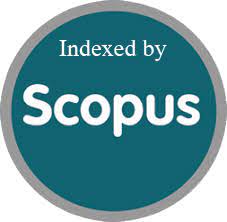Impact of Sensory Marketing Strategies on Customer Retention: A Study on Cosmetic Startups in Bengaluru
DOI:
https://doi.org/10.52783/jns.v14.1970Keywords:
Sensory marketing, customer retention, cosmetic startups, visual marketing, tactile marketing, brand loyalty, consumer behaviourAbstract
This study surveys the impact of sensory marketing strategies on customer retention among cosmetic startups in Bengaluru, India. In an increasingly competitive cosmetics industry, startups seek innovative approaches to enhance brand recall and consumer loyalty. Sensory marketing, which engages consumers' visual, auditory, olfactory, and tactile senses, has been recognized as a key driver of customer experience and retention. However, research on its effectiveness in the context of startups remains limited.
The study adopts a quantitative research design, utilizing descriptive and inferential statistics to analyze data collected from 249 representatives of cosmetic startups through a structured questionnaire. SPSS software was used for data processing, with Cronbach’s alpha (0.897) ensuring the reliability of the measurement scale. Regression analysis indicates that tactile marketing strategies (β = 0.595, R² = 0.354) have the strongest influence on customer retention, followed by visual (β = 0.157, R² = 0.025), auditory (β = 0.146, R² = 0.021), and olfactory marketing (β = 0.095, R² = 0.009). Correlation analysis further confirms strong interconnections among sensory marketing elements, with tactile marketing showing the highest positive correlation (r = 0.595, p < 0.01) with customer retention.
The findings suggest that cosmetic startups should prioritize tactile marketing strategies, such as interactive packaging and product texture while integrating visual and auditory elements to reinforce brand identity. The study contributes to sensory marketing and customer retention literature, offering practical insights for startups and paving the way for future research across different industries and geographical regions.
Downloads
Metrics
References
Aslam, M., Ahmad, B., & Rasheed, T. (2025). Navigating the Impact of Green Innovation, Technological Linkages, and Knowledge Management on Sustainable Performance of SMEs. In Journal of International Entrepreneurship. Springer Science+Business Media. https://doi.org/10.1007/s10843-024-00371-8
Razak, N. A., Marmaya, N. H., Wee, N. M. M. F., Sadik, M. Z., Juhari, J., & Harun, H. (2021). Protection Motivation Theory and Skincare Risks: The Role of Social Influence towards Purchasing Intentions of Local Cosmetic Products. In International Journal of Academic Research in Business and Social Sciences (Vol. 11, Issue 11). https://doi.org/10.6007/ijarbss/v11-i11/11615
Hultén, B. (2011). Sensory marketing: The multi-sensory brand-experience concept. European Business Review, 23(3), 256-273. https://doi.org/10.1108/09555341111130245
Krishna, A. (2012). An integrative review of sensory marketing: Engaging the senses to affect perception, judgment, and behaviour. Journal of Consumer Psychology, 22(3), 332-351. https://doi.org/10.1016/j.jcps.2011.08.003
Lindstrom, M. (2005). Brand sense: Build powerful brands through touch, taste, smell, sight, and sound. Free Press.
Morrin, M., & Ratneshwar, S. (2003). Does it make sense to use scents to enhance brand memory? Journal of Marketing Research, 40(1), 10-25. https://doi.org/10.1509/jmkr.40.1.10.19128
Orth, U. R., & Malkewitz, K. (2008). Holistic package design and consumer brand impressions. Journal of Marketing, 72(3), 64-81. https://doi.org/10.1509/jmkg.72.3.64
Payne, A., & Frow, P. (2005). A strategic framework for customer relationship management. Journal of Marketing, 69(4), 167-176. https://doi.org/10.1509/jmkg.2005.69.4.167
Pine, B. J., & Gilmore, J. H. (1998). Welcome to the experience economy. Harvard Business Review, 76(4), 97-105.
Reichheld, F. F., & Sasser, W. E. (1990). Zero defections: Quality comes to services. Harvard Business Review, 68(5), 105-111.
Schmitt, B. (1999). Experiential marketing. Journal of Marketing Management, 15(1-3), 53-67. https://doi.org/10.1362/026725799784870496
Spangenberg, E. R., Crowley, A. E., & Henderson, P. W. (1996). Improving the store environment: Do olfactory cues affect evaluations and behaviours? Journal of Marketing, 60(2), 67-80. https://doi.org/10.2307/1251931
Hultén, B. (2011). Sensory marketing: The multi-sensory brand-experience concept. European Business Review, 23(3), 256-273. https://doi.org/10.1108/09555341111130245
Krishna, A. (2012). An integrative review of sensory marketing: Engaging the senses to affect perception, judgment, and behaviour. Journal of Consumer Psychology, 22(3), 332-351. https://doi.org/10.1016/j.jcps.2011.08.003
Lindstrom, M. (2005). Brand sense: Build powerful brands through touch, taste, smell, sight, and sound. Free Press.
Payne, A., & Frow, P. (2005). A strategic framework for customer relationship management. Journal of Marketing, 69(4), 167-176. https://doi.org/10.1509/jmkg.2005.69.4.167
Downloads
Published
How to Cite
Issue
Section
License

This work is licensed under a Creative Commons Attribution 4.0 International License.
You are free to:
- Share — copy and redistribute the material in any medium or format
- Adapt — remix, transform, and build upon the material for any purpose, even commercially.
Terms:
- Attribution — You must give appropriate credit, provide a link to the license, and indicate if changes were made. You may do so in any reasonable manner, but not in any way that suggests the licensor endorses you or your use.
- No additional restrictions — You may not apply legal terms or technological measures that legally restrict others from doing anything the license permits.










